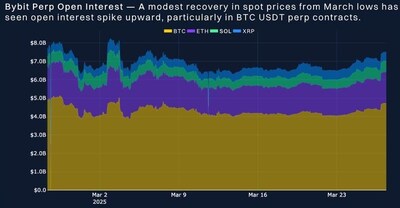Ostium Launches Competitive Points Program for Trading Activity and Liquidity Provision
GEORGE TOWN, Cayman Islands, April 2, 2025 /PRNewswire/ — Ostium, the pioneering leveraged trading platform for Real World Assets, today announced the launch of its Ostium Points Program, a competitive system tracking user activity and engagement across the platform designed to help incentivize trading, referrals, and liquidity provisioning across its ecosystem. Today the platform enables users to long or short stocks, commodities, indices and currencies.
The program officially launches on Monday, March 31, 2025, with an initial points distribution of 10 million points allocated retroactively to early adopters who have been active on the platform prior to the program launch. Retroactive points emphasize recognizing users on Ostium’s public Mainnet and private Mainnet, testnet, and pre-testnet phases. Visit ostium.app/points to check your points allocation.
500,000 points will be distributed weekly based on user activity. Weekly points distribution may increase and available points will be communicated at the start of each week.
The program is designed to recognize early adopters while creating an engaging competitive environment for all participants. By acknowledging users who contribute to the ecosystem through their trading activity, referrals, and liquidity provision, Ostium aims to further strengthen its community of traders and liquidity providers.
The Ostium Points Program features the following components:
- Real-time score tracking: Scores update immediately when users trade or provide liquidity. These scores are converted into points at the end of every week.
- Weekly conversions to points: Every Sunday at midnight UTC, accumulated scores convert to points based on relative participation levels. Score tracking then resets for the new week.
- Dual scoring system: The program tracks two types of scores: Trading/Referral scores and Liquidity Provision scores. While there are two score categories, they combine into a single points total.
- Competitive leaderboards: Users can monitor their real-time ranking against other participants in both score categories and in the global points leaderboard.
- Referral benefits: The program allocates 1 trading score for every 5 trading scores generated by referred users. Users who sign up with a referral code receive a 5% boost on all trading scores.
- Community contributions: A small portion of weekly points is optionally reserved for substantial open-source contributions to the protocol, such as critical bug reports and technical research.
The Points Program represents the next phase in Ostium’s community development strategy, building on its mainnet launch that brought access to global macro markets for the first time onchain.
The Ostium Points Program begins March 31, 2025, at 10:00 AM ET. Users can view their point allocations and track their scores on the platform’s interface. New points are allocated weekly on Sundays at midnight UTC.
For more information about the Ostium Points Program, visit www.ostium.app/points.
About Ostium
Ostium is the leading leveraged trading platform for Real World Assets offering the first onchain long/short exposure to markets like the Nasdaq, Gold, and Oil. The platform enables users to trade stocks, commodities, indices and currencies. Ostium was founded by alumni from Harvard, Bridgewater, and BlackRock and is supported by top-tier investors such as General Catalyst, LocalGlobe, Susquehanna (SIG), GSR, and Alliance DAO.
Note: The Ostium Points Program is designed for tracking engagement and participation. Points have no monetary value, cannot be transferred, sold, or exchanged for any consideration, and do not represent any ownership interest, investment opportunity, or any right to any future rewards. Ostium reserves the right to modify or terminate the program at any time.

Video – https://www.youtube.com/watch?v=ZKuVbGi5hQY
Logo – https://www.007stockchat.com/wp-content/uploads/2025/04/Ostium_Labs_Co_Group_427320838__2_Logo.jpg
![]() View original content:https://www.prnewswire.co.uk/news-releases/ostium-launches-competitive-points-program-for-trading-activity-and-liquidity-provision-302417669.html
View original content:https://www.prnewswire.co.uk/news-releases/ostium-launches-competitive-points-program-for-trading-activity-and-liquidity-provision-302417669.html

Featured Image: depositphotos @ makidotvn







